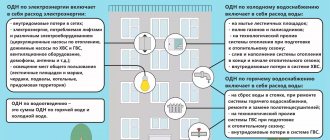Home/Heating rules/Formation of tariffs in 2021
Tariffs for thermal energy are constantly rising. Living in an apartment building with central heating, you have to pay regardless of your needs. A stunning new feature in 2021 was the charging of heating fees in the summer. To understand the essence of setting heating tariffs in 2021, you should familiarize yourself with the regulatory documents. Knowing some starting points, you can draw the right conclusions and take care of saving heat
Regulations
In 2010, a law was passed that regulates all heat issues. It’s called “On Heat Supply” (07/27/2010). The main points of this document are:
- basic concepts;
- distribution of responsibilities of government bodies;
- government approach to pricing;
- relations between heat suppliers and customers;
- work on the quality of heat supply;
- price zones and their features;
- self-governing enterprises;
- rights to heat supply facilities.
Ordinary consumers are concerned only with the first six points. The structure that controls the heat supply is the Federal State Energy Supervision Authority. Antimonopoly control is assigned to the Antimonopoly Committee. The first authority in which an ordinary consumer can resolve heat-related issues of interest to him is the local authorities of administrative units.
Attention
Article 7 of the above document talks about the main approaches to setting prices and tariffs for heating in 2021. The main directions are accessibility for citizens of the state, feasibility from an economic point of view, stability. Part 6 is especially important in this article. It talks about the availability to the population of information related to heat pricing.
Many questions related to the formation of heating tariffs in 2021 are answered by Article 8. It discusses the types of payments that apply to ordinary consumers. Among them:
- tariffs for substances used for heat transfer;
- water heating fee;
- heat transportation services;
- maintaining thermal power in working condition during non-working periods.
The regulation of heat supply tariffs is based on the economic justification of costs, indexation, and ensuring profitability.
The second document relating to heat is the Federal Law of November 23, 2009 No. 261-F3 “On energy saving and increasing energy efficiency and on introducing amendments to certain legislative acts of the Russian Federation.” This law mainly concerns consumers in two chapters:
- Chapter 2 describes the powers of state authorities and local governments in the field of heat supply.
- Chapter 3 describes regulations, efficiency and heat metering.
Innovations
On July 19, 2021, a number of amendments were adopted to the law “On Heat Supply”. The main purpose of these changes is the transition from state management to negotiated prices. What exactly has changed in the legislation?
| Article | Old version | New option |
| Art.2 p10 | The program of investment projects of organizations involved in heat supply involves connecting consumers to the heat supply system. | The program of investment projects of organizations involved in heat supply involves connecting consumers to the heat supply system. This program is not being developed in price zones. |
| Art. 2p18a | It is permissible to set a price by agreement of the parties . | The price is set strictly as a result of the agreement of the parties, but cannot exceed the maximum permissible level |
| Art. 2p18b | The process of transferring thermal energy is regulated by the state | The process of transferring thermal energy is regulated by the state, but in some cases the price is acceptable by agreement of the parties |
| Article 15ch9.3 | Management organizations that receive heat for public services are required to pay fees on time, otherwise they will be charged penalties. | Management organizations that receive heat under a heat supply agreement are required to pay fees on time, otherwise they will be charged penalties. |
Who sets heating tariffs in 2021?
Article 11 of the Law “On Heat Supply” states that prices for heat and its transmission can be set by the regulatory body (clause 1). In this case, single-rate and two-rate tariffs are applied. Prices are subject to change. They depend on the type of heat source and the distance over which the thermal energy is transferred. Price changes are also influenced by other parameters, which are described in the document called “Basics of pricing in the heat supply sector.”
Article 15 of this law states that heat consumers purchase it from the heat supply organization on the basis of a bilateral agreement. According to Article 2, the price for consumed heat is set by agreement of the parties, but it should not exceed the maximum permissible. In other words, the state sets only minimum and maximum price limits (Article 8, paragraph 1). Otherwise, the cost of the services provided depends on the supplier. The heat energy supplier includes all costs plus estimated profit in its price. This is mentioned in Article 7.
Who sets the tariff and how?
Tariffs for the maintenance and repair of houses serviced by management companies are determined in the following order:
- Management company employees develop a base tariff taking into account expenses over the past period and the design features of buildings.
- The owners of the premises at the general meeting approve the proposed tariff.
- Management company employees send an application to the regional housing department for approval of the tariff.
- The housing department reviews the approved tariff, adjusts it if necessary and approves it.
If the tariff is adjusted upward, authorities are required to justify the changes in writing. The tariff is established for a period of at least one year.
It is important to take into account that in cities of federal significance (Moscow, St. Petersburg and Sevastopol), tariffs are approved not by regional authorities, but by local municipalities.
If the house is managed with the help of an HOA, then proposals for tariffs are prepared by board members, and approval occurs at a meeting of HOA members. When the building is directly managed by apartment owners, tariffs are determined by the terms of contracts with resource suppliers and service providers.
After the tariffs are approved at the meeting, representatives of the HOA or management company must send the following package of documents to the administration:
- proposed tariff schedule;
- written justification;
- passport of an apartment building;
- constituent documents of the management organization;
- an extract from the minutes of the residents’ meeting at which the tariffs were approved.
An extract from the minutes must contain information about the number of square meters of the house, the number of meters owned by those present at the meeting, and the number of votes cast for the approval of tariffs.
Why do I pay for heating in summer?
According to the Law “On the Protection of Consumer Rights”, people are obliged to pay only for the service actually rendered. Why do heat supply organizations charge for heating in the summer in 2021, because the radiators are cold? This question is fully answered by clause 1.7, clause 8 of the article: consumers are charged for servicing the heat source in the absence of consumption. That is, consumers are required to pay for preventive, repair and other work aimed at preparing thermal power for operation in the cold season.
What is included in the rent
The fee for maintaining and repairing a house includes the costs of the following components:
- maintenance and repair of utilities providing the house with water, gas, heating and electricity;
- resources spent on maintaining common areas;
- remuneration of contractors and management company employees;
- maintenance of information databases and other auxiliary systems that ensure storage and systematization of data on work performed;
- maintaining common areas and the surrounding area in proper sanitary condition.
The resources that go into maintaining the house include electricity for lighting the entrances and facades of houses, water spent on irrigating the local area, etc.
The list of necessary work includes cleaning entrances and local areas, routine repairs of stairwells, windows, access doors, painting walls, etc.
Is it possible to save on heating?
With the onset of the heating season, home budget losses increase sharply. It's no secret that the lion's share of expenses for housing and utility bills falls on heating. Conscientious citizens are wondering: is it possible to save money somehow?
For your information
You can only talk about saving on heating in 2021 by studying the types of fuel and heating devices.
Heating system
The most optimal savings are achieved if there is independent heating in the apartment. Here, each owner regulates the heat supply himself and pays for it according to the meter. What if a person lives in a multi-storey building with central heating? There is only one way out - to look for an opportunity to obtain permission to disconnect from the general system. The solution to the problem is complex, but possible.
Having autonomous heating in 2021, you should take care of saving heat in all available ways:
- Reducing heat losses. Insulating the walls in the apartment will help with this. Once a high-quality repair is carried out, it will save thermal energy for a long time.
- Selecting a heat source. Heat sources include gas and electric boilers, heated floors, convectors, and electric heaters. Each type of equipment has its pros and cons. The choice depends on many factors.
- Installation of thermostats. This helps ensure optimal heat conditions.
- Pipeline layout. The correctly selected number of radiators and the method of their installation significantly reduce heat loss.
A systematic and competent approach will help you achieve excellent results.
Central heating
In multi-storey buildings with central heating in 2021, personal savings will not work. Heat is supplied to the apartment regardless of the wishes of the owners. There is only one way out - installing a heat meter. There are both communal and individual meters. When installing an individual apartment meter, payment will be made for the heat supply of an individual apartment. To this fee will be added transportation costs and heating of common areas: entrance and staircases.
When installing a common house meter, payment for heating tariffs in 2021 is made according to the readings of the device as a percentage of the area of the apartment. Both the first and second options have their advantages and disadvantages.
Attention
Having installed an apartment meter, you will have to take care of insulating the apartment, otherwise this may result in an increase in fees. But if it’s not cold outside, you can turn off the tap, reducing the heat supply. Having a personal meter will allow you not to heat an empty apartment. This will help reduce costs by up to 6%.
When installing a common house heat meter, you should take care of the accuracy of the readings taken. According to Article 6 of the Law “On Heat Supply,” residents have the full right to information, which they must use for their own purposes. To do this, it is enough for the selected person to control the taking of meter readings by representatives of the management company. Alternative accounting management will help avoid misunderstandings and reduce costs.
Nuances
Heat consumers should pay attention to the fact that hot batteries in 2021 are no longer a state monopoly. Heat energy suppliers are commercial organizations whose purpose is to make a profit. They supply hot water to taps and radiators on a contractual basis. The only criterion that inhibits their appetites is the limit set by the state. Based on their commercial interests, heat suppliers charge full fees for repairs and maintenance of coolants in the summer. This is a harsh reality confirmed by law.
Comments Showing 0 of 0
How to calculate rent
Each component of the rent can be calculated in one of the following ways:
- using the formulas given in Resolution No. 354 and in the charter of a specific management structure;
- by submitting a request to the accounting department of the management company.
The formulas described in Resolution No. 354 allow you to calculate rent according to the following indicators:
- the area of all premises of the house;
- area of common non-residential premises;
- number of storeys;
- service life of the building;
- area of the payer's apartment;
- presence and type of communications.
Depending on the method of work and the architectural features of the building, calculations may include additional parameters. As a rule, they are listed on the websites of management companies and housing associations, as well as on the portals of municipal housing committees.
Calculation using formulas is made by employees of the organization carrying out repairs and maintenance of the house, taking into account the volume of resources consumed, labor expended and local tariffs.
To obtain detailed rent calculations, you need to submit an application to the Criminal Code.











